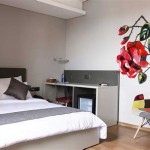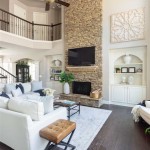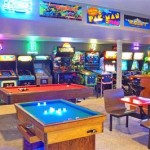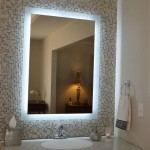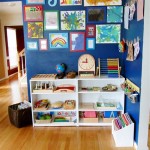The Art of Fine Dining Restaurant Decor: Elevating the Culinary Experience
Fine dining restaurants transcend the simple act of providing nourishment; they offer curated experiences that engage all the senses. Central to this immersive environment is the decor, a carefully orchestrated symphony of aesthetics designed to complement the cuisine and elevate the overall perception of quality. Successful fine dining restaurant decor is not merely about opulent furnishings or the latest design trends. It is about crafting an atmosphere that evokes a sense of sophistication, intimacy, and exclusivity, while simultaneously enhancing the enjoyment of the meal.
The principles of fine dining restaurant decor are rooted in understanding the psychology of space and the interplay between visual elements and human perception. Every detail, from the lighting to the artwork, from the table settings to the acoustics, contributes to the overall impression and influences the diner's experience. The goal is to create a seamless, harmonious environment where guests feel comfortable, pampered, and ultimately, willing to invest in the culinary offerings.
The decor should be considered an extension of the restaurant's brand and culinary philosophy. A restaurant specializing in classic French cuisine, for example, might opt for a decor style that reflects the elegance and formality of that tradition. Conversely, a restaurant offering innovative, modern cuisine might choose a more contemporary and minimalist aesthetic. The consistency between the decor and the food is critical for establishing authenticity and credibility in the minds of the diners.
Understanding the Key Elements of Fine Dining Decor
Several key elements contribute to the creation of a successful fine dining restaurant decor. These elements must work together in harmony to create a cohesive and impactful experience.
Lighting: Lighting is arguably one of the most important aspects of restaurant decor. It has the power to set the mood, highlight architectural features, and even influence the perceived taste of the food. In fine dining establishments, lighting is typically soft and diffused, creating a warm and inviting ambiance. Layered lighting schemes, combining ambient, task, and accent lighting, are often employed to add depth and dimension to the space. Dimmers are essential for adjusting the lighting levels throughout the day and evening, allowing the restaurant to adapt to different moods and needs. Candlelight is another popular lighting choice, adding a touch of romance and intimacy to the dining experience. The color temperature of the light is also crucial; warmer tones generally create a more inviting and relaxing atmosphere.
Color Palette: The choice of colors in a fine dining restaurant can significantly impact the overall mood and atmosphere. Neutral colors, such as creams, beiges, and grays, are often used as a base, providing a sense of sophistication and elegance. These colors also serve as a neutral backdrop for highlighting other design elements, such as artwork or furniture. Accents of color, such as deep jewel tones or metallic hues, can be used to add visual interest and create a sense of luxury. The specific color palette should be carefully chosen to complement the restaurant's brand and culinary style. For example, a restaurant specializing in seafood might incorporate shades of blue and green to evoke the ocean, while a restaurant serving Italian cuisine might use warmer earth tones.
Furniture and Table Settings: The furniture and table settings in a fine dining restaurant should be both aesthetically pleasing and functional. Comfortable seating is essential, allowing guests to relax and enjoy their meal. Tables should be appropriately sized for the number of diners and provide ample space for dishes and drinks. Linens, such as tablecloths and napkins, add a touch of elegance and sophistication. High-quality tableware, including plates, cutlery, and glassware, is also crucial for enhancing the dining experience. The design of these items should be consistent with the overall decor style and reflect the restaurant's brand. Attention to detail is key; even the placement of the cutlery and glassware can contribute to the overall sense of refinement.
The Importance of Sensory Experience
Fine dining decor extends beyond the visual realm to encompass the entire sensory experience. The goal is to create an environment that engages all five senses, creating a memorable and immersive experience for the diner.
Acoustics: The acoustic environment of a fine dining restaurant is often overlooked but is crucial for creating a comfortable and enjoyable dining experience. Excessive noise can be disruptive and detract from the overall ambiance. Sound-absorbing materials, such as acoustic panels, carpets, and upholstered furniture, can be used to reduce noise levels and create a more intimate atmosphere. Background music, carefully curated to complement the restaurant's style and ambiance, can also enhance the dining experience. The music should be played at a volume that is low enough to allow for conversation but loud enough to fill any awkward silences.
Textural Elements: The use of different textures can add depth and visual interest to the decor. Incorporating a variety of materials, such as wood, stone, metal, and fabric, can create a more tactile and engaging environment. For example, exposed brick walls can add a rustic touch, while smooth marble surfaces can create a sense of luxury. The choice of fabrics for upholstery and window treatments can also contribute to the overall texture of the space. The interplay of different textures can create a more dynamic and visually appealing environment.
Scent: Scent, often the most underappreciated sense, can significantly influence the dining experience. Subtly infused pleasant fragrances can enhance the atmosphere and create lasting memories. Avoid overpowering or artificial scents that could clash with the food's aroma. Consider using natural scents like fresh flowers or subtle essential oil diffusers to create a welcoming and inviting ambiance. The olfactory element of the decor should be carefully chosen to complement the restaurant's overall style and culinary offerings.
Maintaining and Adapting the Decor
Fine dining restaurant decor requires ongoing maintenance and adaptation to remain fresh and relevant. Regular cleaning and upkeep of furniture, fixtures, and finishes are essential for preserving the appearance of the restaurant. Renovations or updates may be necessary periodically to refresh the decor and keep it in line with current trends. It is also important to be mindful of seasonal changes and adapt the decor accordingly. For example, incorporating seasonal flowers and decorations can add a festive touch to the dining experience. Adapting the decor to reflect the changing seasons helps create a sense of novelty and keeps the dining experience fresh and engaging for regular guests.
Furthermore, it's crucial to gather feedback from guests and staff regarding the decor. This feedback can provide valuable insights into what aspects of the decor are successful and what areas may need improvement. Regularly assessing the decor through surveys or informal conversations can help ensure that the restaurant is creating the desired atmosphere and meeting the expectations of its clientele. The decor should continuously evolve based on customer feedback and industry trends to remain competitive and appealing.
In conclusion, fine dining restaurant decor is a complex and multifaceted art form. It requires a deep understanding of design principles, human psychology, and the interplay between various sensory elements. By carefully considering all of these factors, restaurant owners and designers can create an environment that elevates the dining experience and enhances the restaurant's brand. The ultimate goal is to create a space that is not only visually appealing but also comfortable, inviting, and conducive to enjoying a memorable meal.

Fine Dine Restaurants Kriaan

Fine Dine Restaurants Kriaan

Group Interiors Best Restaurant Decoration

Fine Dining Restaurant Design All The Vital Elements

19 Beautiful Restaurant Interiors World S Best Restaurants

12 Fantastic Fine Dining Experiences Interior Design Luxury Restaurant

Ways To Enhance Fine Dining Restaurant Interior Design Galaxy

The Finest Of Fine Dining Meet 5 Best Design Restaurants In Paris La Villa Restaurant Brabbu Forces

Fine Dine Restaurant With A Sensory Dining Experience Where Food And Design Merge Projected Rays The Architects Diary

The Finest Of Fine Dining Meet 5 Best Design Restaurants In Paris Le Ciel De Restaurant Copyright Vincent Leroux Brabbu Forces
Related Posts


